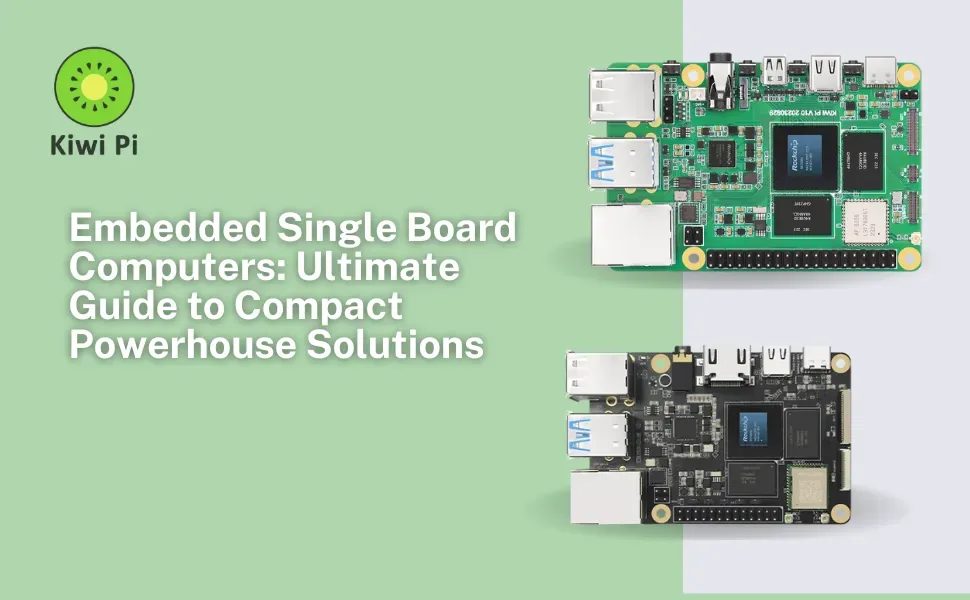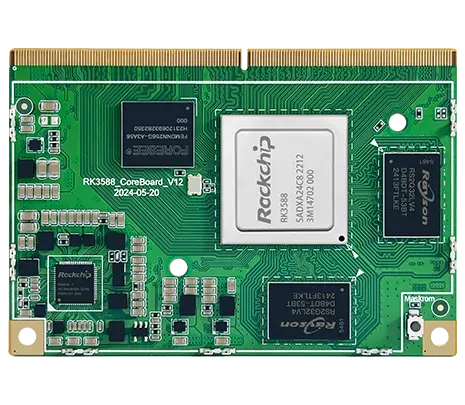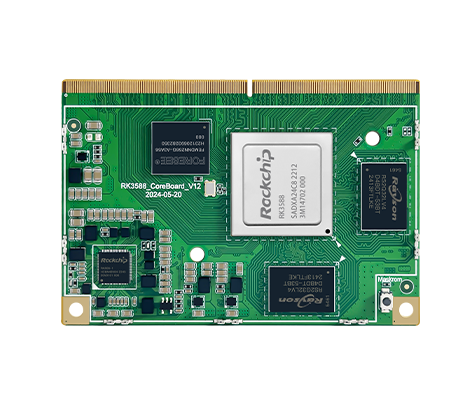
Kiwi Pi 5
Embedded Single Board Computers: Ultimate Guide
In today's rapidly evolving technological landscape, embedded single board computers have emerged as critical components powering everything from industrial automation to smart home devices. These compact yet powerful computing solutions pack full computer functionality onto a single circuit board, offering remarkable performance in space-constrained applications. In this comprehensive guide, we'll explore the world of single board computer embedded systems, including premium solutions like Kiwi Pi 5, Kiwi Pi CM5, and Kiwi Pi 5 Ultra from our product lineup.

What Are Embedded Single Board Computers?
Embedded single board computers (SBCs) are complete computers built on a single circuit board, containing all the necessary components including processor, memory, input/output (I/O) ports, and often onboard storage. Unlike traditional desktop computers with separate components, these integrated systems are designed for specific applications where reliability, compact size, and low power consumption are paramount.
Key Characteristics of Embedded SBCs
Compact form factor: Typically ranging from credit-card size to slightly larger dimensions
Low power consumption: Designed for energy-efficient operation, often without active cooling
Rugged construction: Many feature industrial-grade components for harsh environments
Specialized I/O: Include interfaces like GPIO, I2C, SPI for hardware integration
Long-term availability: Often available for years to support product lifecycles
Common Applications of Single Board Computer Embedded Systems
Embedded SBCs serve countless applications across industries. Some prominent use cases include:
Industrial automation and control systems
Medical devices and diagnostic equipment
Digital signage and kiosk systems
IoT gateways and edge computing nodes
Robotics and drone control systems
Automotive infotainment and telematics
Choosing the Right Embedded Linux Single Board Computer
When selecting an embedded Linux single board computer, several critical factors come into play. The ideal choice depends on your specific application requirements, performance needs, and environmental conditions.

Processor Performance Considerations
The CPU is the heart of any SBC. Consider these aspects:
Core count: More cores enable better multitasking (e.g., Kiwi Pi 5's quad-core vs. octa-core options)
Clock speed: Higher GHz ratings generally mean faster processing
Architecture: ARM-based (common in embedded) vs. x86 (higher performance)
AI acceleration: Some modern SBCs like Kiwi Pi 5 Ultra include NPUs for machine learning tasks
Memory and Storage Options
Evaluate these memory characteristics:
RAM capacity (2GB to 16GB+ in modern SBCs)
Storage interfaces (eMMC, SATA, NVMe, microSD)
Expandability options for future need
Embedded Linux on Single Board Computers
At Kiwi Pi, we've developed a range of high-performance embedded single board computers designed to meet the most demanding applications while maintaining energy efficiency and reliability.

Core Specifications
| Feature | Kiwi Pi 5 | Kiwi Pi 5 Ultra | Kiwi Pi CM5 |
|---|---|---|---|
| CPU | Rockchip RK3588S 4×Cortex-A76@2.2GHz + 4×Cortex-A55@1.8GHz | Rockchip RK3588 4×Cortex-A76@2.2GHz + 4×Cortex-A55@1.8GHz | Rockchip RK3588 4×Cortex-A76@2.2GHz + 4×Cortex-A55@1.8GHz |
| GPU | ARM Mali-G610 MC4 OpenGL ES 1.1/2.0/3.1/3.2, OpenCL 1.1/1.2/2.0, Vulkan 1.1/1.2 | ||
| NPU | Triple-core NPU, 6 TOPS Supports int4/int8/int16/FP16/BF16/TF32 acceleration | ||
| VPU | Decoding: 8K@60fps (H.265/VP9/AVS2), 8K@30fps (H.264), 4K@60fps (AV1) Encoding: 8K@30fps (H.265/H.264) Kiwi Pi CM5 adds: 32×1080P@30fps decoding + 16×1080P@30fps encoding | ||
Memory & Storage
| Feature | Kiwi Pi 5 | Kiwi Pi 5 Ultra | Kiwi Pi CM5 |
|---|---|---|---|
| RAM | LPDDR4X 8GB (options: 4/16/32GB) | LPDDR4X 8GB (options: 4/16/32GB) | LPDDR4X 8GB (options: 4/16/32GB) |
| Storage | eMMC 64GB (options: 128/256/512GB) MicroSD slot | eMMC 128GB (options: 64/256/512GB) MicroSD slot | eMMC5.1 128GB (options: 64/256/512GB) |
Connectivity & I/O
| Feature | Kiwi Pi 5 | Kiwi Pi 5 Ultra | Kiwi Pi CM5 |
|---|---|---|---|
| USB | 1×Type-C (USB3.1-OTG/DP/PD) 2×USB 3.0 Host 2×USB 2.0 Host | 1×Type-C (USB3.1-OTG/DP/PD) 4×USB 3.0 Host 2×USB 2.0 Host | 2×Type-C OTG 2×USB2.0 Host (via 314-pin MXM connector) |
| Video Output | HDMI2.1 (8K@60fps) Type-C DP1.4 (8K@30fps) Mipi-DSI 4-Lane | HDMI2.1 (8K@60fps) Type-C DP1.4 (8K@30fps) Mipi-DSI 4-Lane Display Port DP 1.4 | 2×HDMI/eDP TX 2×MIPI-DSI 4Lane (via MXM connector) |
| Video Input | 2×MIPI-CSI 4Lane | 4×MIPI-CSI 4Lane HDMI RX 2.0 | 1×MIPI-CSI 4Lane 1×HDMI RX (via MXM connector) |
| Ethernet | 1×1000Mbps RJ45 | 2×1000Mbps RJ45 | 2×Gmac (via MXM connector) |
| Wireless | WiFi 6 (802.11ax) up to 600.4Mbps Bluetooth 5.4 (2.4/5GHz) | Not specified (likely via MXM expansion) | |
| Serial Ports | Not specified | 2×RS-232, 1×RS-485 | Programmable via MXM connector |
Power & Physical Specifications
| Feature | Kiwi Pi 5 | Kiwi Pi 5 Ultra | Kiwi Pi CM5 |
|---|---|---|---|
| Power Supply | Type-C PD 12V/2A Supports QC2.0/PD3.1/BC1.2 | DC 12V/2A | DC 4V/5A |
| Dimensions | 56×85mm | Not specified | 82×55mm |
| Weight | 300g | Not specified | Not specified |
| Operating Temp | Not specified | Not specified | 0°C to 60°C |
Software & Expansion
| Feature | Kiwi Pi 5 | Kiwi Pi 5 Ultra | Kiwi Pi CM5 |
|---|---|---|---|
| OS Support | Linux 5.10 (option:6.10) Android 12, Debian 11, Ubuntu 22.04 | ||
| Expansion | 26-pin header (UART, PWM, I2C, SPI, CAN, GPIO) | Not specified | 314-pin MXM connector (PCIe2.0/3.0, SATA3.0, SDMMC, etc.) |
Key Differentiators
Kiwi Pi 5: Balanced features with convenient Type-C power and compact size (56×85mm)
Kiwi Pi 5 Ultra: Maximum connectivity (dual Ethernet, 4×CSI, HDMI RX) and industrial interfaces (RS-232/485)
Kiwi Pi CM5: Module form factor with MXM connector for custom carrier boards and industrial temperature range

Linux has become the dominant operating system for embedded single board computers due to its flexibility, open-source nature, and robust community support.
Benefits of Using Embedded Linux
Customizability: Trim down to only needed components
Stability: Proven reliability in mission-critical systems
Security: Regular updates and strong permission model
Cost-effectiveness: No licensing fees
Community support: Vast array of drivers and software
Popular Linux Distributions for Embedded SBCs
Several Linux distributions are optimized for single board computer embedded applications:
Yocto Project: Highly customizable for specific hardware
Buildroot: Lightweight and easy to configure
Debian ARM: Extensive package repository
Ubuntu Core: Secure, transactional updates
Specialized distros: Like Raspberry Pi OS for educational SBCs
Developing for Embedded Linux SBCs
When developing applications for embedded Linux single board computers:
Cross-compile on more powerful development machines
Optimize for limited resources (memory, storage)
Consider real-time requirements if needed
Leverage hardware-specific features (GPIO, accelerators)
Test thoroughly on target hardware
Conclusion
Embedded single board computers have revolutionized how we implement computing power in compact, energy-efficient packages. From industrial automation to cutting-edge AI applications, these versatile devices continue to push the boundaries of what's possible in embedded systems. When selecting a single board computer embedded solution, carefully consider your performance requirements, I/O needs, and environmental conditions. For those seeking premium performance, our Kiwi Pi lineup - including the Kiwi Pi 5, Kiwi Pi CM5, and Kiwi Pi 5 Ultra - offers industry-leading solutions with robust features and reliable operation. Whether you're deploying an embedded Linux single board computer for a commercial product or prototyping an innovative IoT device, today's SBCs provide unprecedented capabilities in remarkably small form factors.

